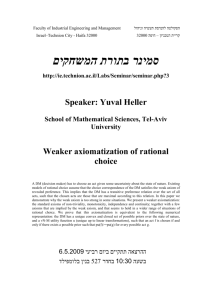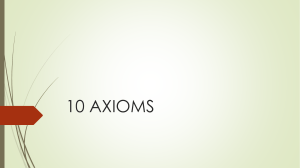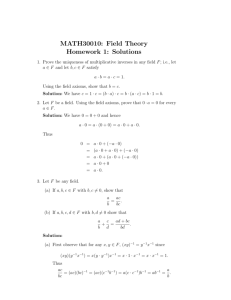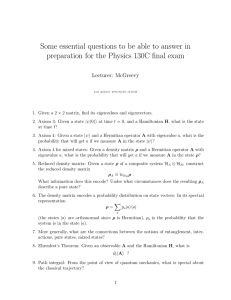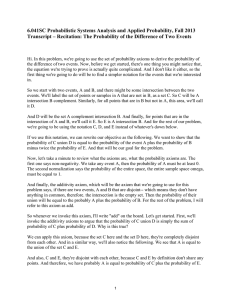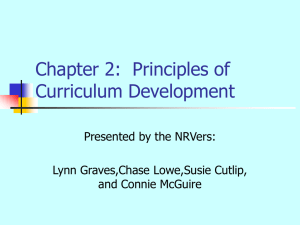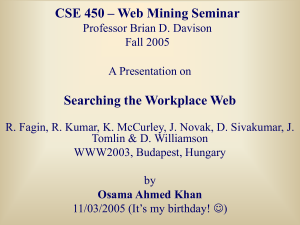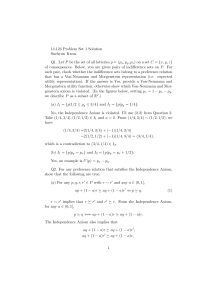Communication
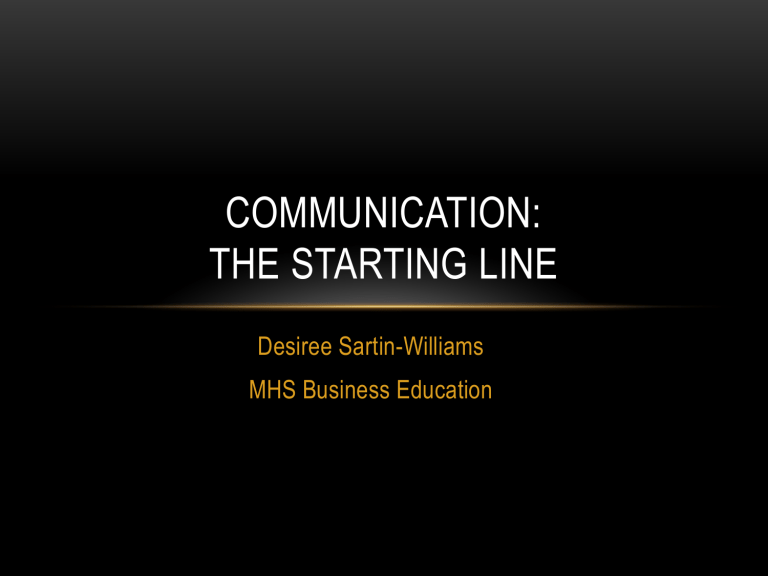
COMMUNICATION:
THE STARTING LINE
Desiree Sartin-Williams
MHS Business Education
COMMUNICATIONS ASSIGNMENT
(DUE TODAY)
Directions: Use the Internet to answer the following questions on a sheet of paper.
1.
Define Communication.
2.
What is your favorite form of communication. How often do you use it daily? How can this form of communication be used in education?
3.
List and explain the essential elements of communication.
4.
Describe the characteristics and functions of communication.
5.
Define Axiom.
6.
Identify and provide examples of five basic axioms of the communication process.
1.
DEFINE COMMUNICATION.
• Communication is the deliberate or accidental transfer of meaning.
• Human communication takes place interpersonally
(one to one), in small groups (one to a few), in public forums (one to many), via the media, or online.
2. LIST AND EXPLAIN THE ESSENTIAL
ELEMENTS OF COMMUNICATION.
The essential elements of communication are
1.
people,
2.
messages,
3.
channels,
4.
noise,
5.
context,
6.
feedback,
7.
and effect.
3. DESCRIBE AND EXPLAIN REPRESENTATIVE
MODELS OF COMMUNICATION, INCLUDING
ONE OF YOUR OWN CREATION.
• Models of communication have been developed to illustrate the communication process in action.
• All acts of communication share two general characteristics:
• First, since communication is a dynamic process, each interaction is part of a series of interconnected communication events.
• Second, every communication experience is unique, unrepeatable, and irreversible.
4. DESCRIBE THE CHARACTERISTICS AND
FUNCTIONS OF COMMUNICATION.
• Communication serves a number of essential functions in our lives. It promotes self-other understanding, helps us establish meaningful relationships, and enables us to examine and attempt to change the attitudes and behavior of others.
5. IDENTIFY AND PROVIDE EXAMPLES OF FIVE BASIC AXIOMS OF THE
COMMUNICATION PROCESS.
• Axiom 1: You cannot not communicate.
• Axiom 2: Every interaction has both a content and a relationship dimension.
• Axiom 3: Every interaction is defined by the way it is punctuated.
• Axiom 4: Messages are digital and analogic (verbal and nonverbal).
• Axiom 5: Communication exchanges are either symmetrical or complementary.
• Developing communication skills is a lifelong process. This book explains the strategies you can use to assess your own communication abilities, improve the effectiveness of your communication relationships, and enhance the quality of your life.



